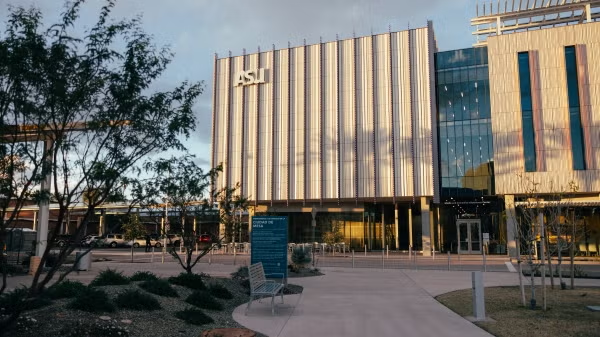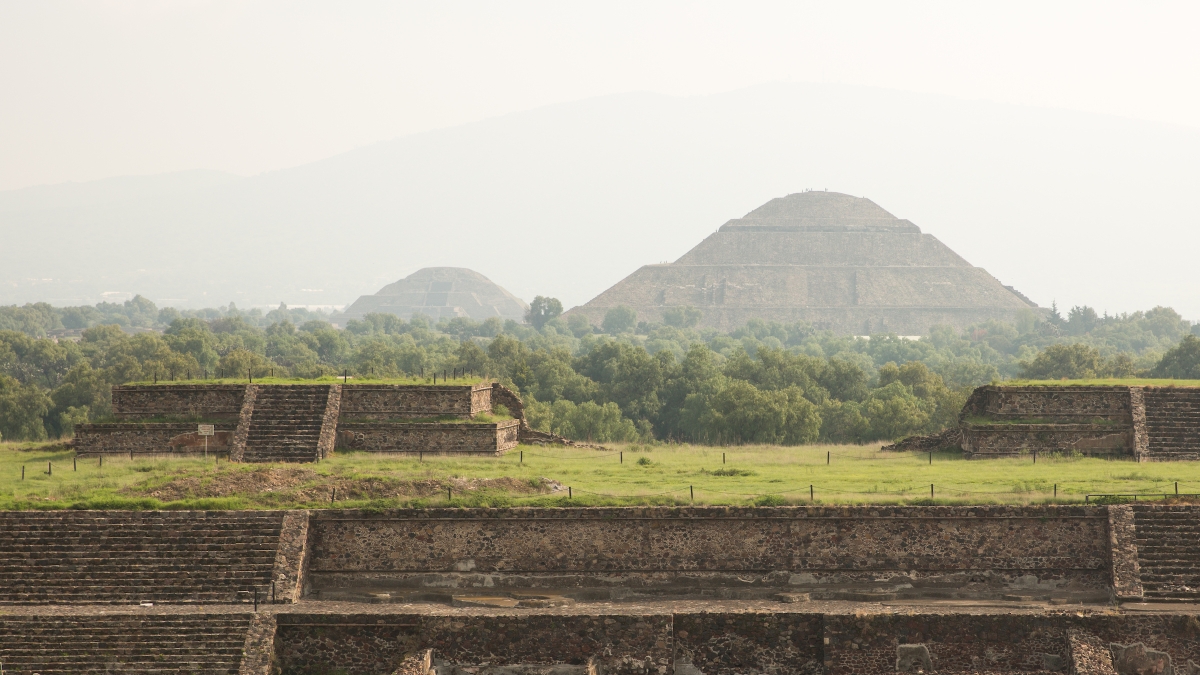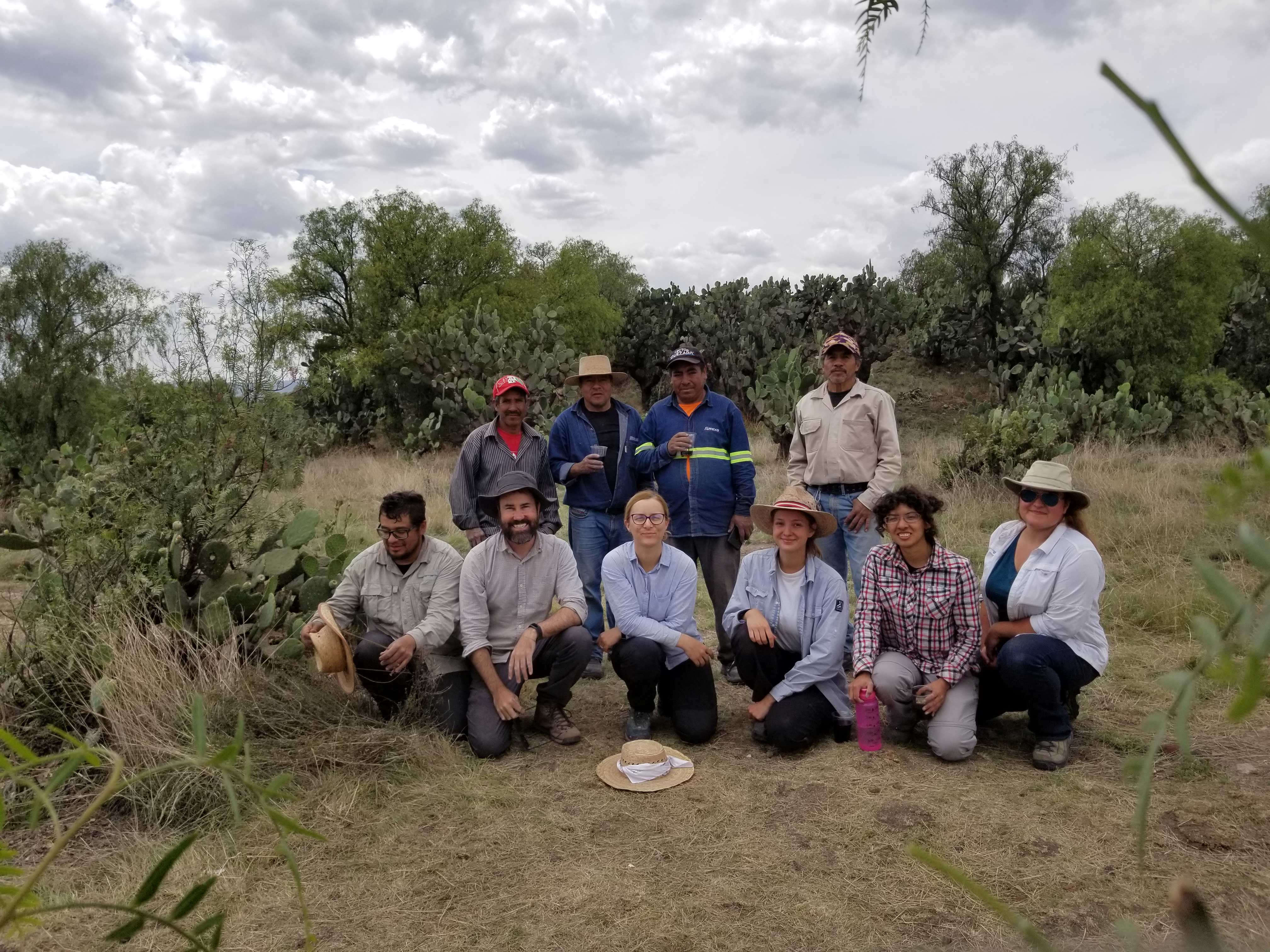In A.D. 400 the city of Teotihuacan, located about 30 miles northeast of Mexico City, was a thriving metropolis, the biggest city in the Western Hemisphere and so influential that the Maya wanted to be, as one previous ASU News article recounted, “Teotihuacan hipsters.”
By A.D. 750, the city had ceased to exist.
What happened? Historians aren’t sure. One theory postulates that the poor rose against the elite and burned major buildings, religious sculptures and artwork. A second theory suggests invaders sacked and burned the city.
Nearly 1,500 years later, Andrew Somerville, who graduated from Arizona State University in 2006 with degrees in anthropology and religious studies, and Marion Forest, an archaeologist who was a postdoctoral fellow at ASU and now is a visiting researcher, hope they can dig their way to answers.
They recently completed mapping, micro topography and surface collection at Teotihuacan, and plan to return for four to five weeks over the next two summers to dig on a site the size of approximately five football fields, to try to collect more information as to why the once-great city was reduced to rubble.
“The neighborhood of this city that we’re working in is notable because it was occupied pretty heavily after the rest of the city collapsed,” said Somerville, now an assistant professor at Iowa State. “People either kept living there or more people moved in. So it’s a good area to kind of try to figure out maybe what happened. Why did it collapse? And who are these people that were living there afterwards?”
Andrew Somerville (front row, second from left), Marion Forest (front row, third from left) and team on site in Teotihuacan, Mexico. Photo courtesy Andrew Somerville
The dig, which is being funded in part by a National Science Foundation grant ($45,000 of which is run through ASU’s School of Human Evolution and Social Change) could help provide answers explaining the decline of modern-day urban cities, said Michael Smith, professor and director of the Teotihuacan Research Laboratory.
MORE: Check out our three-part series on the Teo lab
“The specifics of urban decline at Teotihuacan are quite different from the specifics of urban decline today, which are more in the realm of shrinking cities, damage from climate change and socio-economic decline,” Smith said, “but ancient cities like Teotihuacan can be a source of information on alternative urban pathways, showing what kinds of actions and institutions worked well and what kinds did not work so well.”
“It’s a perfect lab,” Forest said. “We’re going to use this lab for more than just saying, ‘What is a city in the past?’ We’re going to say, ‘What is the end of this city in the past, and what can that tell us about what to do and what are the points of weakness?’
“It’s very, very complex because there are so many different scenarios that are suggested and a lot of passions around what explained the collapse. … All those scenarios could be true in some way. And I think this is very interesting and something that is a take-home kind of thing about urban settings in general.”
Excavations at Teotihuacan began in the 1860s, and archaeologists from ASU have been conducting fieldwork there for almost 50 years. Somerville and Forest, co-principal investigators on the current project, said there are themes that could connect Teotihuacan to modern-day cities around the world.
“Because we have this particular neighborhood, we have a big-time sequence we can look at to see if maybe inequality increased through time,” Somerville said. “That is something we could kind of connect to the present or, specifically, with this new group (of people who came to Teotihuacan), is migration or immigration related to the collapse of the city, where a bunch of foreign immigrants start to overwhelm state services?”
Somerville said they will look at sizes of homes and even trash piles to try to determine if inequality existed.
“Does everyone have the same-sized houses, or through time, do you start seeing some individuals with really big rooms and other individuals with small rooms?” Somerville said. “Those are things we can actually quantify. In trash piles, we can look at the amount of imported goods at the time. Do certain households have access to imported, fancier stuff, whereas other individuals don’t?”
Forest will head up a team looking at the chemicals of pottery and other artifacts to try to determine if a different ethnic group came in and eventually overwhelmed Teotihuacan. They’ll also study bones at burial sites.
“We can see if they grew up locally or if they grew up from a foreign, distant area,” Somerville said. “And did they reject the ideology of the state? That’s still a big question that we don’t totally know the answer to yet.”
Top photo: View of two ancient pyramids with Cerro Gordo mountain in the background at Teotihuacan, Mexico. Photo by Ken Fagan/ASU News
More Arts, humanities and education

Exceeding great expectations in downtown Mesa
Anyone visiting downtown Mesa over the past couple of years has a lot to rave about: The bevy of restaurants, unique local shops, entertainment venues and inviting spaces that beg for attention from…

Upcoming exhibition brings experimental art and more to the West Valley campus
Ask Tra Bouscaren how he got into art and his answer is simple.“Art saved my life when I was 19,” he says. “I was in a dark place and art showed me the way out.”Bouscaren is an …

ASU professor, alum named Yamaha '40 Under 40' outstanding music educators
A music career conference that connects college students with such industry leaders as Timbaland. A K–12 program that incorporates technology into music so that students are using digital tools to…



